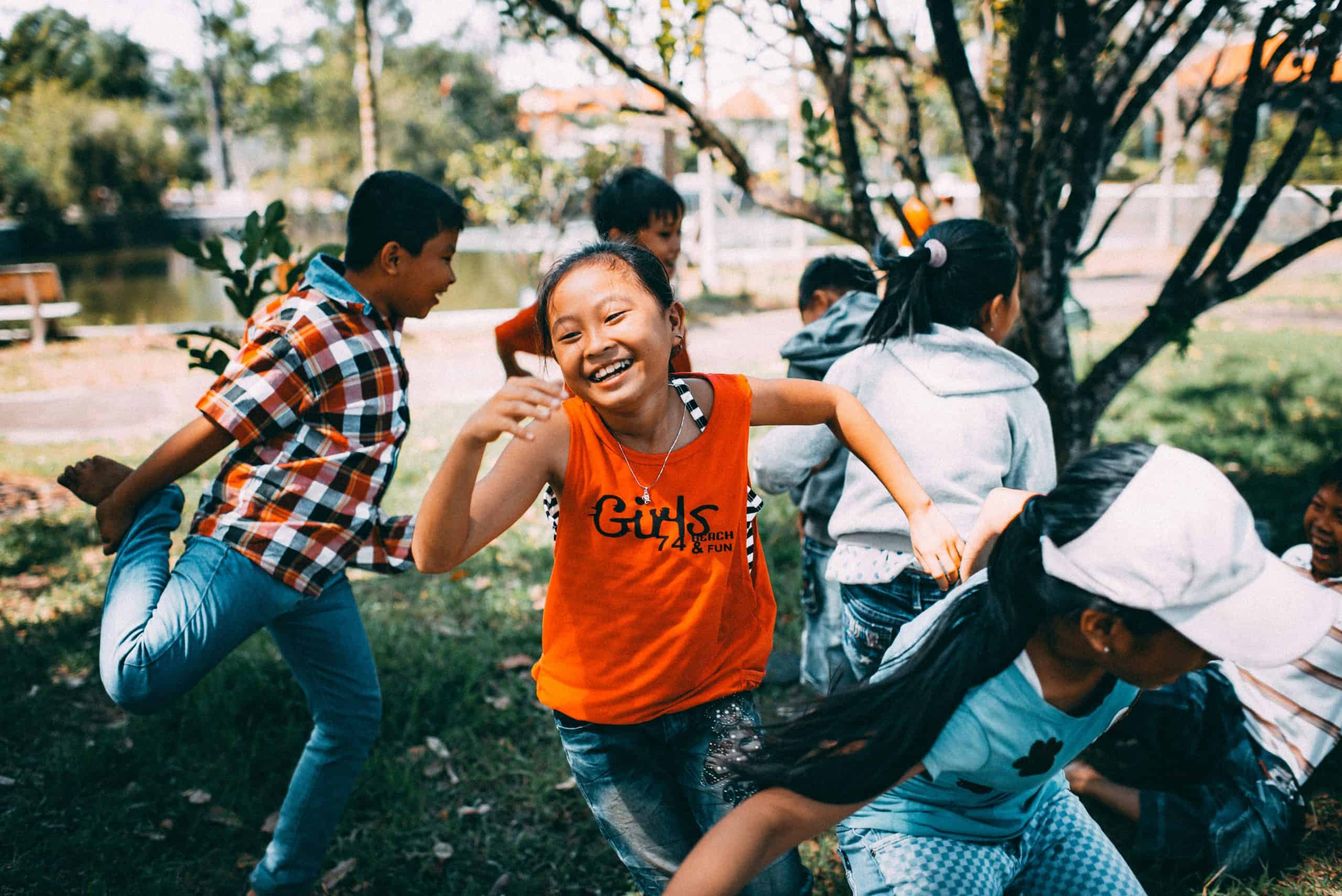
Just childhood games – or new worlds of discovery?: How and why children develop microcultures during competitive play
Thank you to Dr. Michelle Bauer, postdoctoral fellow in the Department of Pediatrics, Faculty of Medicine, University of British Columbia and Laura Cunningham, undergraduate student in the department of Biology, Faculty of Science, University of British Columbia, for providing this post.
A wealth of research demonstrates that there are developmental benefits for children’s participation in competitive play,1,2 when they attempt to outperform their peers in goal-oriented activities such as “Tag.” These benefits include, for example, the strengthening of motor skills,3,4 greater self-confidence,5 and more pro-social development,6,7 where they can learn how to navigate conflict in their peer groups and improve their communications with friends. The role of competition in children’s development of microcultures, however, remains poorly understood.
Microcultures consist of smaller peer communities children develop where children adopt new roles and identities (e.g., becoming a builder of a tree fort), construct new cultural customs together (e.g., requiring everyone to bring logs to a fire), and engage their imagination and creativity for the purposes of building new worlds.8,9
Microcultures can provide children with opportunities to create, learn, and discover the outdoors together in ways they may not be afforded through their engagement in adult-structured and -supervised activities, such as through their enrollment in sports and recreational programs.10
Despite these benefits, however, there is little understanding for how and why children develop microcultures in the context of their competitive outdoor play when they attempt to outperform peers and navigate challenges and obstacles.
New research by Drs. Bauer and Pike from the Department of Pediatrics at the University of British Columbia examined how and why children may develop microcultures during their competitive play outdoors.11 The study was carried out with children between the ages of 9 and 13 enrolled in a summer day camp in Vancouver, and observational and interviewed-based methods were used throughout a two-week period. Findings from the study showed that children developed microcultures as a result of participation in competitive games and activities.
Importantly, they found that, compared to non-competitive microcultures, the microcultures they developed during competition (a) consisted of new organizations of rules and roles for the purposes of fulfilling competitive tasks; (b) were special to children because the children felt they could spend time with friends; and (c) promoted gender inclusivity among the peer groups.
The findings suggested that competitive play can afford children with unique developmentally beneficial opportunities by reinforcing children’s use of imagination in their games and activities, such as when they imagined becoming an octopus to chase and catch each other. Further, these microcultures were largely structured around children wanting to be in close physical proximity to their friends, as children were more likely to play competitive games such as “Manhunt” – a chasing game where children often climbed and swung across playground equipment to escape a designated “chaser” – and engage in activities if they felt someone they trusted and felt familiar with was the one to invite them and guide them through difficult tasks (e.g., if they had a hard time crossing a rope bridge and needed assistance). Importantly, competitive play seemingly disrupted gender segregation occurring during other play activities at the camp, as the children wanted to be on the same team with other children they felt had the cognitive and physical skills required to complete tasks during competition, and they were observed not to base their preference for team selection on other children’s gender.
These findings could suggest that competitive microcultures can help children navigate and resolve peer conflict and teach them which peers they can rely on for advice and support in new roles they create (e.g., who can communicate well with them to help them cross a rope bridge), as they can bolster children’s physical activity and pro-social behavior while they engage in conflict negotiations (e.g., decide as a group what rules are fair and whether or not others are subscribing to the rules). Importantly, the authors encourage more research be done to examine how and why children develop microcultures during their play in peer communities, especially in communities where one or more children identify as having a disability,12 and the authors call for a greater examination into the ways in which competition may instead serve as a barrier for inclusivity among gender-diverse groups.13
Despite the need for further research in the area, it is important to acknowledge the learning opportunities competitive microcultures can afford children,14 and to continue to explore the potential for childhood games to provide children with imaginative and peer-oriented worlds of discovery and development.
Dr. Michelle E. E. Bauer is a BC Children’s Hospital Research Institute funded post-doctoral fellow in the Department of Pediatrics at the University of British Columbia. Her research at the BC Injury Research and Prevention Unit examines parents’ and children’s perspectives on risk, injury, and play, with the goals of understanding how play opportunities shape child development and the navigation of safety threats.
Ms. Laura Cunningham is an undergraduate student in Biology at the University of British Columbia, where she works with the BC Injury Research and Prevention Unit under the supervision of Drs. Ian Pike and Bauer to examine parents’ occupational exposures and child injury and play perspectives.
References
- Holmes, R. M., & Procaccino, J. K. (2009). Preschool children’s outdoor play area preferences. Early Child Development and Care, 179(8), 1103–1112. https://doi.org/10.1080/03004430701770694
- Kochanek, J., Matthews, A., Wright, E., DiSanti, J., Neff, M., & Erickson, K. (2019). Competitive readiness: developmental considerations to promote positive youth development in competitive activities. Journal of youth development, 14(1), 48-69.
- Jorgenson, K. A. (2015). Wild Rumpus Revisited: the Benefits of Outdoor Play in the Vocation of the Child. Word & World, 35(4), 358.
- Sutapa, P., Pratama, K. W., Rosly, M. M., Ali, S. K. S., & Karakauki, M. (2021). Improving motor skills in early childhood through goal-oriented play activity. Children, 8(11), 994.
- Howard, J., Miles, G. E., Rees‐Davies, L., & Bertenshaw, E. J. (2017). Play in middle childhood: Everyday play behaviour and associated emotions. Children & Society, 31(5), 378–389. https://doi.org/10.1111/chso.12208
- Kangas, M. (2010). Creative and playful learning: Learning through game co-creation and games in a playful learning environment. Thinking Skills and Creativity, 5(1), 1–15. https://doi.org/10.1016/j.tsc.2009.11.001
- Breathnach, H., Danby, S., & O’Gorman, L. (2018). ‘We’re doing a wedding’: Producing peer cultures in pretend play. International Journal of Play, 7(3), 290–307. https://doi.org/10.1080/21594937.2018.1532702
- Bauer, M. E. E., Brussoni, M., & Han, C. (2022). Children’s play in natural environments and their development of microcultures: ‘we were born in the wilderness’. Children, Youth and Environments, 32(2), 112–124. https://doi.org/10.1353/cye.2022.0017
- Whiten, A., & Flynn, E. (2010). The transmission and evolution of experimental microcultures in groups of young children. Developmental Psychology, 46(6), 1694. https://doi.org/10.1037/a0020786
- Watchman, T., & Spencer-Cavaliere, N. (2017). Times have changed: Parent perspectives on children’s free play and sport. Psychology of Sport and Exercise, 32, 102–112. https://doi.org/10.1016/j.psychsport.2017.06.008
- Bauer, M. E. E., & Pike, I. (2024). Children’s competitive microcultures: an examination of the social organization of rules and roles in gender inclusive and performance-based outdoor play. Journal of Adventure Education and Outdoor Learning, 1-15. https://doi.org/10.1080/14729679.2024.2312936
- Nabors, L., Willoughby, J., Leff, S., & McMenamin, S. (2001). Promoting inclusion for young children with special needs on playgrounds. Journal of Developmental and Physical Disabilities, 13(2), 170–190. https://doi.org/10.1023/A:1016665409366
- Reimers, A. K., Schoeppe, S., Demetriou, Y., & Knapp, G. (2018). Physical activity and outdoor play of children in public playgrounds—do gender and social environment matter? International Journal of Environmental Research and Public Health, 15(7), 1356. https://doi.org/10.3390/ijerph15071356
- Saal, B. (2023). Enlightening through children—playing and thinking together in new ways. Children & Society, 37(4), 1052–1065. https://doi.org/10.1111/chso.12662

